As a motorcycle rider, you’ll agree that there’s no better feeling than being out there on the road. You know? Cool Leather jacket on, the wind brushing past as you’re speeding through. It’s quite exhilarating, really. But when the dust starts hitting your eyes at 200mph, it’s not so fun anymore, is it? Well, this is where motorcycle helmets come in. The gear is important in not only protecting your eyes but your head too, should you decide to go plummeting down.
A motorcycle helmet is more of a necessity when you are riding a high-speed machine. In fact, according to the National Highway Traffic Safety Administration, around 1,859 lives were saved in 2016 alone, simply because of motorcycle helmets. The other 802 who didn’t wear helmets, weren’t so lucky. Motorcyclists are 27 times more likely to have a fatal accident than car drivers, according to recent car vs. motorcycle fatality rates. These helmets now come in many various types and creative designs that go well to compliment your riding gear.
When choosing one, it’s important to consider the intended nature of use. Are you only an occasional user, or do you intend to ride it regularly? And with multitudes coming up in the market every day, it may also be hard to find a suitable one. Luckily for you, we bring our top pick of the best motorcycle helmets out there today to suit your needs.
According to the National Highway Traffic Safety Administration (NHTSA), around 1,859 lives were saved in 2016 simply because of motorcycle helmets. Around 802 lives would have been saved within the same year had all motorcyclists or bikers worn helmets. You read that right. If only, eh? Well, don’t let yourself become a statistic. Get yourself a motorcycle helmet if you plan on riding a bike anytime soon to avoid head or traumatic brain injuries from motorcycle accidents. Of course, choosing one isn’t going to be easy, especially with so many options in the market. If you’re pressed for time and plan to go on the open road ASAP, we’ve got just the thing for you – a list of the best motorcycle helmets this 2018.
Top 9 Motorcycle Helmets Of 2020 Reviewed
1. ILM Modular Flip-Up
 Best Motorcycle Helmet For Music
Best Motorcycle Helmet For Music
The ILM Modular Flip-Up Full Face Motorcycle Helmet has something that our other two picks don’t. It has Bluetooth technology, built-in speakers, and an intercom that allows two riders to talk while out on the open road with up to a distance of 1000 feet between them. The batteries have 8 hours of talk time and 110 hours of standby. You can call and answer incoming calls. You can also reject calls or redial using One Touch Control.
This helmet exceeds ECE and DOT Safety Standards which is exactly what you need for safety. Even better, it uses DSP Echo Cancellation and Noise Suppression Technology. However, if you go anywhere above 40mph, talking over Bluetooth or listening to podcasts and audiobooks become difficult. Music, though, does not seem to be affected even at high speed. In addition, the manual is hard to understand. And you better make sure you like everything on your playlist because there’s no fast-forward button to skip a track.
Pros:
- Bluetooth capability
- Long battery life
- Very comfortable
Cons:
- Hard to hear calls/podcasts/audiobooks at high speed
- Poorly written manual
- No fast forward function
2. Bell Qualifier Street Helmet
 Best Motorcycle Helmet For The Money
Best Motorcycle Helmet For The Money
If you want a motorcycle helmet that’s simple, sturdy, comfortable AND affordable, then you don’t need to look further than the Bell Qualifier. The helmet is constructed of a lightweight polycarbonate/ABS shell and features a fully padded interior. This includes contoured cheek pads and a washable, removable liner that is also antibacterial.
The helmet also comes with an anti-fog, anti-scratch, and UV protected ClickRelease Shield. To keep your head cool even during scorching summers, the helmet has a Velocity Flow Ventilation system and FlowAdjust. However, it comes with a clear visor. If you want a dark or self-darkening visor, you will need to pay more. The Wind Collar that’s supposed to reduce noise significantly doesn’t work as well when you’re going 50 mph or faster. Some users report that the sizes run small for them.
Pros:
- Lightweight yet durable
- Velocity flow ventilation system
- Removable and washable liner
Cons:
- Comes with a clear visor (self-darkening sold separately)
- Wind collar doesn’t reduce noise significantly at high speeds
- Sizes run small
3. Fuel Helmets SH-FF0016
 Best Motorcycle Helmet For Beginners
Best Motorcycle Helmet For Beginners
The Fuel Helmet SH-FF0016 is another affordable option for riders who want a full face motorcycle helmet. It features a lightweight thermoplastic shell (DOT FMVSS N.218 approved), removable cheek pads, and a dual vented diffuser to keep your head cool in hot weather. The helmet also comes with UV clear coated paint, a Quick Release shield, and a D-ring closure with retention snap to keep the helmet secure. However, it can get noisy inside the helmet. It fogs easily if you’re in traffic too long. And the opening of the helmet is a bit on the small side which makes putting on the helmet difficult.
Pros:
- Lightweight
- DOT certified
- Very affordable
Cons:
- Wind noise can get really loud
- Can fog easily
- The opening is a bit small
4. TORC T55 Spec-Op Half Helmet
 Best Motorcycle Helmet For Beards
Best Motorcycle Helmet For Beards
If you don’t like wearing a full face helmet, then the TORC T-55 Spec-Op Half Helmet might be right up your alley. This helmet has an advanced thermal polymer alloy shell which is lightweight and comfortable but completely safe as it is able to disperse any energy transferred to the helmet upon impact. It also features an inner removable, washable padding that’s made from antimicrobial fabric. To protect the rider’s eyes from glare, the helmet also has an integrated drop-down sun visor. And in case you’re wondering, this helmet is DOT certified and meets Federal Motor Vehicle Safety Standard (FMVSS) 218. However, the visor doesn’t drop down far enough for some users. Also, the chin strap isn’t the best. It’s not easy to unstrap and feels a bit rough. And because it’s only a half helmet, going 50 mph or faster on the freeway will cause the wind to whip you in the eyes from underneath the visor.
Pros:
- Removable, washable liner
- DOT and FMVSS 218 certified
- Badass design
Cons:
- Visor doesn’t drop down far enough
- The chin strap is a bit hard to use
- Wind passes underneath the visor
5. Triangle Motorcycle Helmets Full Face “Graffiti Cross” Street Bike
 Best Full Face Triangle Motorcycle Helmet
Best Full Face Triangle Motorcycle Helmet
As a rider, you already get street cred for owning a motorbike in the first place, but there’s something about a nice, sleek, matte black helmet to top off the layer of cool. Well, this is exactly what you get with the Triangle Motorcycle Helmets Full Face “Graffiti Cross” Street Bike. This helmet is made through a combination of an advanced ABS shell, created using a combination of high-pressure thermoplastic technology, a multi-density liner as well as laser-cut padding that will guarantee you all the comfort, head cushioning and protection you need as you speed by.
The Triangle helmet is created intuitively too. Much as it covers your full face, it incorporates a ventilation system with both rear and tip extractor, and a visor with quick-change mechanisms in place for a smoother, more breathable ride. It is easily removable and you can wash it when it gets all sweaty. It also features an interior anti-bacterial liner to keep you germ-free.
Pros:
- It has a sleek matte black design; genuinely looks cool
- The helmet is comparatively cheap
- It is well ventilated and fully removable for easy washing
Cons:
- Users claim the locking tabs are not as smooth
- Has a straight locking strap instead of a helmet lock for the usual round clasp
- Doesn’t include a clear visor in the package; you have to buy separately
6. Conquer Snell SA2015
 Best Motorcycle Helmet For Safety
Best Motorcycle Helmet For Safety
The Conquer Snell SA2015 Approved Full Face Auto Racing Helmet has a lightweight fiberglass composite shell construction. It features an anti-scratch, flame-resistant shield. The padded interior is also fire resistant. The helmet also has a Kevlan chin strap and removable cheek pads. And unlike all the other previous picks, this one is Snell SA2015 certified – one of the highest independent testing standards for protective headgear. However, the sizes run small so you need to order one size larger. Also, the cheek pads aren’t adjustable so riders with prescription glasses might find it hard to wear them while using this helmet. Moreover, it doesn’t feature any communication technology.
Pros:
- Snell SA2015 certified
- Anti-scratch, flame-resistant shield
- Fire-retardant padded interior
Cons:
- Sizes run small
- Hard to wear with prescription glasses
- No communication technology
7. Bell Revolver Evo Modular Motorcycle Helmet
 Best Motorcycle Helmet For Touring
Best Motorcycle Helmet For Touring
The Bell Revolver Evo is slightly similar to the Bell Qualifier. For example, it also has a lightweight polycarbonate/ABS shell construction as well as a ClickRelease Shield with NutraFog II Anti-Fog, Anti-Scratch, & UV protection. It also features a washable & removable liner made of antimicrobial fabric. But there are some key differences. The Bell Revolver EVO is a modular style of helmet and it comes with a drop down sun shield for “on the fly” protection. Since it comes with a clear visor, this sunshield is perfect for those who don’t want to wear shades with their helmet. What it doesn’t have is the speaker pockets featured in the Bell Qualifier. Also, the wind noise can get really loud in this helmet. Plus, the magnet holding the chin strap falls off easily.
Pros:
- Lightweight
- Drop down sun shield
- Washable & removable liner
Cons:
- No speaker pockets
- Wind noise can get pretty loud
- Magnet in chin strap falls off easily
8. Yema YM-926
 Best Motorcycle Helmet For Glasses
Best Motorcycle Helmet For Glasses
The YEMA YM-926 is a modular full face helmet that meets the DOT FMVSS 218 standard. It features an aerodynamic ABS shell, multi-density EPS, and a reinforced chin strap with a double D-ring buckle. For airflow, this helmet features adjustable vents at the top and back. The liner is fully removable and washable. And it’s easy to switch out the visor – no tools required. However, it fogs up easily and sizes tend to run small. And it can get very loud.
Pros:
- Reinforced chin strap
- Lightweight
- Sun visor system
Cons:
- Sizes run small
- Fogs up easily
- Loud
9. HJC Helmets CL-17
 Best Motorcycle Helmet For Hot Weather
Best Motorcycle Helmet For Hot Weather
The HJC Helmets CL-17 is a DOT certified full face helmet that meets FMVSS 218 standard. It’s also Snell M2010 certified. Aside from the usual ventilation system, this helmet features a moisture-wicking interior liner to keep your head cool all the time. Plus, the vents are easier to work with even when wearing gloves. The RapidFire Shield Replacement system helps you change shields without any tools. However, the helmet is a fingerprint magnet which requires wiping down the helmet often. It also gets scratched easily. In addition, the sizes tend to run small.
Pros:
- Snell M2010 certified
- Moisture-wicking interior liner
- RapidFire Shield Replacement System
Cons:
- Fingerprint magnet
- Gets scratched easily
- Sizes run small
How to Choose the Best Motorcycle Helmet: The Ultimate Buying Guide
Riding a motorcycle is a fun, thrilling adventure, no doubt. It’s so badass. But you know what’s not fun, thrilling, and badass? Getting hurt because you weren’t responsible enough to wear protective gear, specifically a motorcycle helmet. We all know the statistics. According to the preliminary report released by the Governors Highway Safety Association (GHSA), almost 5,000 people were killed on motorcycles in 2017.
While this number has actually gone down compared to 2016 (5.6% decrease), it still happens 28 times more often than other fatal crashes. What’s even more frustrating is that if all motorcyclists in fatal crashes in 2016 had worn helmets, experts estimated that around 802 lives could have been saved. In short, if you’re going to ride a motorcycle, you’d better be wearing a helmet.
Now, choosing the right one can be overwhelming. There are countless options and price points to consider. You also need to look at the material, safety features, weight, etc. If you’re in the market for a motorcycle helmet, you’re going to need some help. Our motorcycle buying guide should do the trick.
What Type of Motorcycle Helmet Do You Need?
Full-face Helmets
This type of helmet is the safest one you’ll find because it offers the most protection – covering your entire face. Should you ever be in a crash and fall face first onto the ground, the flip down shield and wrap-around chin bar could make the difference between life and death. Our number one pick, the Bell Qualifier Street Helmet, is a full-face helmet.
Open-face Helmets
Unlike the full face helmet, this one only covers three-quarts of your head, leaving your face uncovered (hence the name). The benefit of using an open-face helmet is greater visibility. It also gives you access to easily adjust your glasses while riding. However, you don’t get protection in a very vulnerable area. Even those that come with a flip-down shield don’t offer the same protection provided by a full-face helmet.
Modular Helmets
This type of helmet features a flip-up chin bar enabling you to transform the helmet from a full-face one into an open-face helmet. It’s the most versatile helmet because it allows you to switch between two types as the need arises. You can wear the helmet while eating, chatting with friends, or talking with the chin bar up. However, the hinge is a point of weakness since it may break upon impact. If this is the type of helmet you’re looking for, the ILM Modular Flip-Up is one of the best in the market today.
Half Helmets
As the name suggests, this only covers half of your head – the top and the back of it. Compared to other types of helmets, this offers the least amount of protection. A half helmet is light and probably the most affordable. However, they aren’t ideal for beginners. And you need to make sure that the helmet you get has a good, sturdy chin strap. One of the most popular motorcycle helmets in this category is the Crazy Al’s World’s Smallest Helmet because of the TV show Sons of Anarchy.
Off-road Helmets
This is a full-face helmet is specifically designed for high-intensity sports biking like motocross. It features an elongated chin as well as a sun peak for maximum ventilation. However, it isn’t a helmet that you’d use when riding on the freeway because it lacks an aerodynamic shape and good soundproofing.
Dual-sport Helmets
This type of helmet combines features of an off-road helmet like the sun peak with a helmet used for street riding. This benefits riders who can’t afford to buy two helmets. However, this is not ideal if you only perform one type of riding.
Look for the Stickers
Once you know what type of helmet you need, the next thing you should do is to look for stickers. A motorcycle helmet exists to provide you with protection. Several organizations ensure manufacturers produce helmets that do just that. What does this mean? These organizations test helmet designs to see if they meet the minimum standards of safety, checking to see how well it will hold up in a collision, etc.
The very minimum certification that a motorcycle helmet should have is one given by the Department of Transportation (DOT) which means that it is safe in the eyes of the law. A DOT certification sticker can usually be found on the back of the helmet like with the Fuel Helmets SH-FF0016.
Even stricter than the government standards is the Snell Memorial Foundation’s safety guidelines. This nonprofit organization which was founded in 1957 specifically to test good helmet design. It conducts tests independent of the government. Riders who are extremely safety conscious will want a helmet that has a Snell sticker on the back.
Take note that helmets without a Snell sticker are not considered unsafe. As long as it is DOT certified, you’re good to go. For extra precautions, you may want to go for a helmet with the more stringent standards of the Snell Foundation such as the Conquer Snell SA2015.
What Kind of Material Should The Helmet be Made of?
Motorcycle helmets can be made of polycarbonate, carbon fiber, or fiberglass composite with an interior layer of expanded polystyrene foam (EPS). The latter is responsible for absorbing the shock of impact. Now, the type of material used to construct a helmet affects several things such as price, comfort, safety, and weight.
Polycarbonate is the least expensive material; it flexes as it absorbs energy. The Bell Revolver Evo Modular Motorcycle Helmet is made from this material. Fiberglass composite is more expensive in comparison; it will flex, crush, and/or split on impact. Crazy Al’s World’s Smallest Helmet is made from this material. The most expensive material is carbon fiber which also happens to be the lightest. It will distribute the energy absorbed from the impact so that it is spread evenly.
How Heavy is the Helmet?
You might not think it matters but tries wearing a helmet for a long ride and let us know how your neck and shoulders feel. Typically, helmets weigh from 1400 to 1800 grams. You should get a helmet that is lightweight but still sturdy enough to provide adequate protection. While 3 pounds or 1400 grams is often the recommended weight, it’s also important to make sure that the helmet’s weight is distributed evenly.
If the center of gravity is off, then it doesn’t matter how light the helmet is because you’ll be feeling its weight on your neck. The TORC T55 Spec-Op Half Helmet weighs a little under 3 pounds and the weight is evenly distributed so it won’t be straining your neck at any point during your ride.
What Size Should You Get?
Along with ensuring you get the right kind of helmet with the required certification, you’ll also need to get the right size. This is just as crucial as the other two factors because your safety and comfort will depend on it. A helmet that is loose will jostle around as you ride which can cause your vision to become obstructed or, worse, distract you as you are riding at top speed. On the other hand, if the helmet is too tight, then you might find yourself unable to wear the helmet for too long or cause you to get a headache which, again, can cause you to become distracted while riding. Just like in the story of Goldilocks, it’s important that you find the right size that fits you perfectly.
To do that, you’ll need to try a lot of helmets before you buy. Make sure that all parts of the interior touches your head but does not create any pressure points. It also should not move or have enough space to fit your fingers in between your head and the interior.
If you can’t actually try helmets in your local stores, then you can do the next best thing – measure your head. Use a measuring tape around the largest portion of your head – around half an inch above the eyebrows, above your ears, and around the back. Look at the manufacturer’s measurements and find which size best fits you. Because manufacturers do not use a universal sizing chart, you need to check each one when buying. Once you receive the helmet, make sure to try it on before using it on an actual ride. A properly fitting helmet should fit snugly; you may not find it easy to put on at first but you should keep in mind that it will loosen a little once broken in.
What’s the Retention System?
It’s actually just a fancy term for the chin strap which is the mechanism most motorcycle helmets use to keep the helmet on your head. When trying on a helmet, make sure the strap is secure (you don’t want it whipping your face) but still easy to use. You also want to ensure that the strap is comfortable and not rough or digging into your skin. The Yema YM-926 features a reinforced chin strap that’s secure and comfortable.
How Comfortable is it?
Aside from getting the perfect fit, comfort is also about airflow. You want a motorcycle helmet that won’t let you get a heatstroke even during the hottest of days. A good ventilation system like the one found in the HJC Helmets CL-17. Not only does it have a great ventilation system, but it also features a moisture-wicking interior liner to keep your head cool on long rides. Another feature that ensures your comfort is noise reduction. Generally, the more expensive a helmet is, the less noise you have to contend with. But there are some affordable ones that are perfect if you’re just commuting around town like the Bell Qualifier Street Helmet as long as you don’t go over 50mph.
When Should You Replace Your Helmet?
Helmets should be replaced once every five years at the very least. It doesn’t matter if it hasn’t gone through anything more severe than normal wear and tear. A bad helmet isn’t going to be better than no helmet. It might be even worse if it fails just when you need it (i.e. cracking or splitting open).
If your helmet experienced unusual stress such as saving your noggin after a road accident, you should replace it immediately even if it doesn’t look like it. If you dropped the helmet accidentally, you need to inspect it thoroughly to make sure that there isn’t any damage or change to how well it fits you. Also, make sure that the interior lining isn’t coming out or starting to flake.


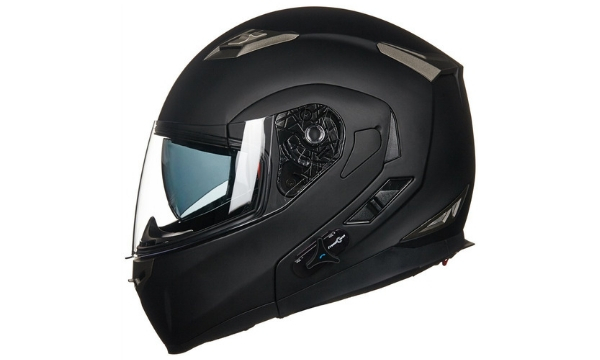
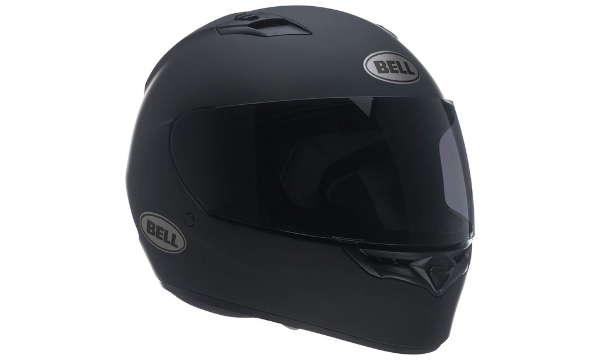
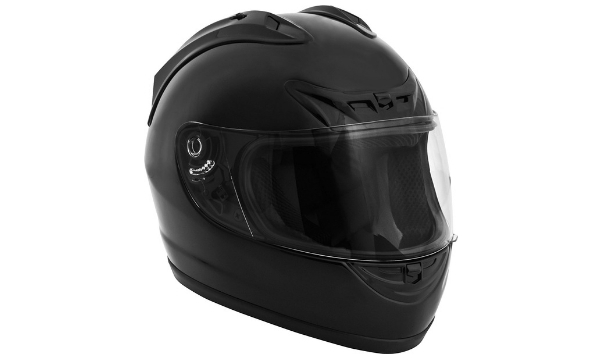
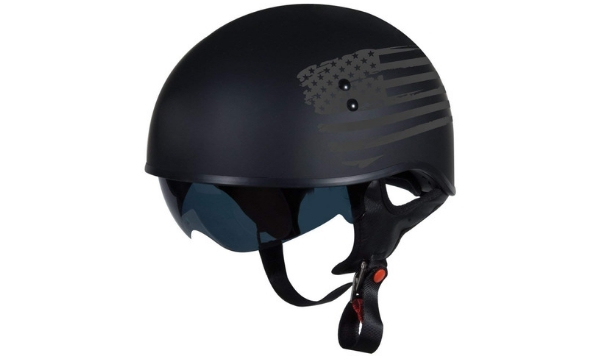
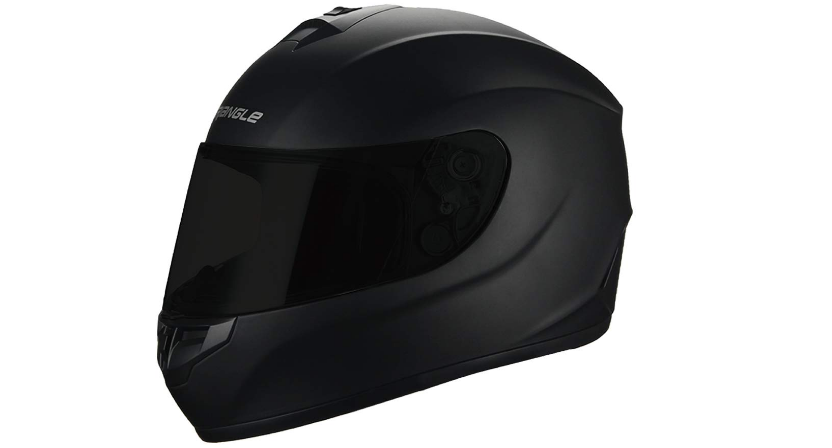
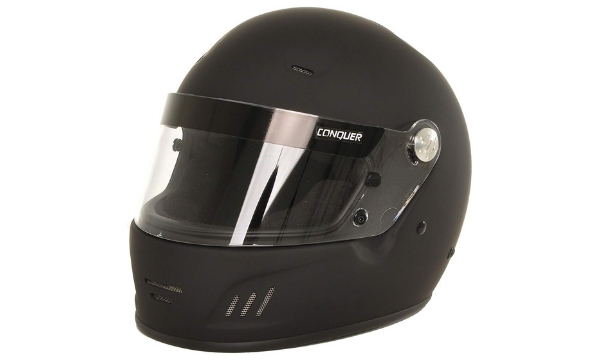
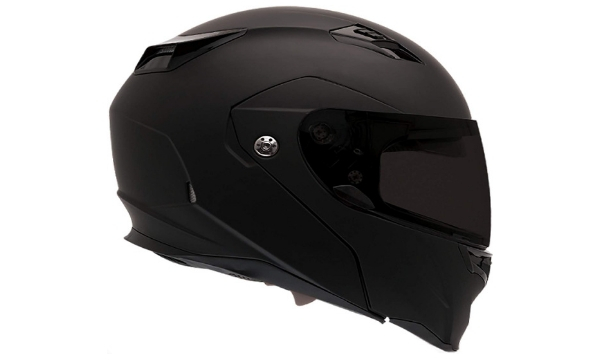
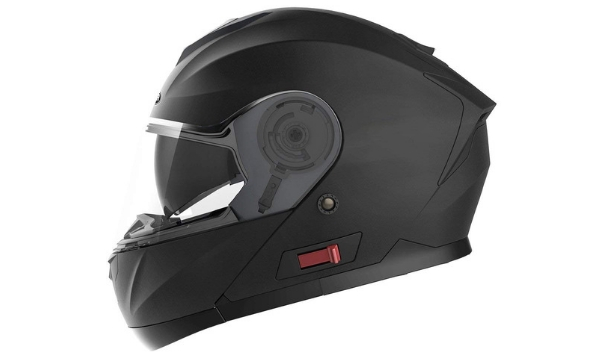
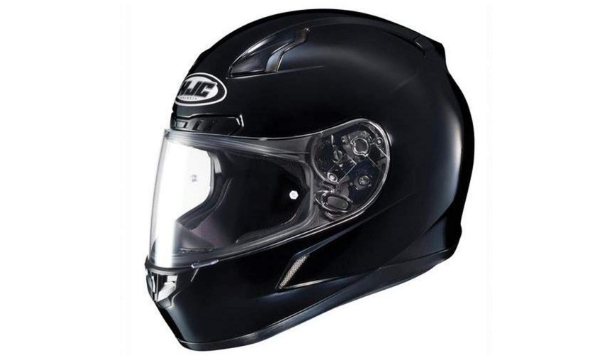


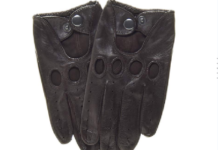
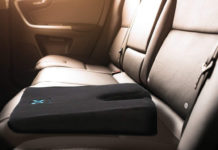
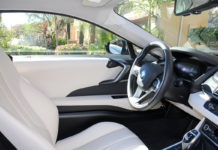






![Best Crochet Hooks for Beginners and Pros [2020 Update] best crochet books](https://www.awebtoknow.com/wp-content/uploads/2018/01/best-crochet-books-100x70.jpg)


